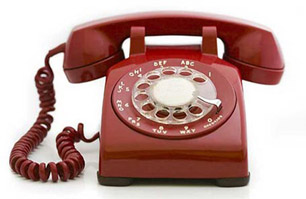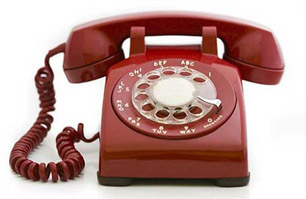The Art of Pitching the Media
Oct 12, 2011 Beth Monaghan
Public relations is more art than science, and as long as people are involved in creating companies and in writing about those companies, art will prevail. Today, we have tools at our fingertips that enable us to press one button and reach thousands of reporters, helpless against the onslaught of untailored and uninteresting pitches. I sometimes long for the days when I was instructed to stand in the mail room and manually send out “blast faxes” on launch day because the tedium often dissuaded those in charge from going this route.
We don't allow blast anythings at InkHouse for one simple reason: they don’t work. Sure, if you are a PR professional, and you are looking to play that numbers game, I’m sure you’ll get some placements. If you blast enough emails out to enough reporters someone will eventually bite. But you’ll be starting from scratch again next week when you embark on your next campaign.
The anonymity of digital communications lets people hide behind their computers, and makes it easy to forget that relationships do matter. Do you want a reporter to think, “Oh here’s the tenth email from Sandra this week. Delete?” Of course not. But if you spent your last campaign blasting out emails without securing any feedback, you’re starting from scratch, and probably at a disadvantage because you are now about to annoy all of those reporters again.
The relationship business is a hard one, much harder than it was when I first got into PR. And that is what separates the good and thoughtful PR people from the blast emailers. Here is my advice if you want the media to pay attention.
Start by writing down your pitch – and rework it until you would open the email. You might be delivering it by phone, but the simple act of writing it down will help crystallize it and prepare you for the questions you will receive. My advice for the written pitch:
- Lead with the news. This sounds obvious, but it bears repeating. The subject line should convey three things: the news, the timeliness and why it’s important. This is the most important part of your pitch. If a reporter does not respond to the subject line, everything else is lost in the trash bin. Example of a bad subject line: “XYZ Corp, the leading provider of social media measurement tools launches new product.” A good subject line: “Advance on 10/6 news re: first metric for on & offline influence?”
- Sound like a real person. If the body of your email reads like a marketing brochure, you should get a glossy copy and hand it out to prospects. Reporters want to interact with human beings who understand what is interesting and what is not. Casual correspondence is important. And brief pitches work best. I recommend no more than 3-4 sentences until the reporter asks for more.
- Make it easy to find more information. Hyperlink, hyperlink, hyperlink.
- Include your contact information! Don’t lose the story because the reporter didn’t have your phone number.
- Be yourself. You won’t build relationships by turning yourself into someone else’s vision of the perfect PR person. If you are yourself, you’ll create relationships that you can nurture.
Now how should you deliver the pitch? Before you even think about making the pitch, READ the reporter’s work. This will add relevance to your pitch and will save you from embarrassment when you discover that the reporter wrote a very similar story to the one you are pitching just yesterday. Then, choose your channel wisely:
- Phone adds humanity. It’s only through a live conversation that you can have, well, a conversation. Knowing when to place that call is the key though – there are important rules about when to call daily newspapers and broadcast outlets. Know them and follow them. Likewise, understand that a phone call conveys importance. Don’t call unless your news is worthy of a call or your pitch is strong enough to withstand tough questioning. On the phone, you have a minute or two to make your case, so come prepared with information – you do not want to have to go back and ask questions because you’ll lose the opportunity. And if you get the, “can you send it to me in an email?” line, do not assume the reporter is interested. You’ve just encountered a kind reporter who is trying to let you down nicely. That is what I say to all of the salespeople trying to sell me water/news monitoring/office supplies, etc. at InkHouse.
- Email is easy to ignore. I like email pitching and it works when you craft the pitch well. Email messages are non-intrusive and are an effective way to share information with links to deeper data. However, they are also easy to ignore. Your first step is to make sure the pitch is good, but the next step is to make sure the pitch is received. Mass email pitching alone is the equivalent of praying for a miracle. It might happen, but you’d be best suited to find a way to channel divine intervention through your own actions.
- Social media is tricky. We use social media to interact with the media frequently. However, this is tricky territory. What is NOT okay? Pitches posted in public places: @ messages on Twitter, Facebook walls, and blog comments. What IS okay? Direct messages on Twitter (and Facebook if you know the reporter accepts pitches there, although if I were a reporter, I would not welcome that tactic). When in doubt, read the notes in your media database as a starting point (Cision provides intelligence about how reporters prefer to be contacted). But if you are going to be working with a reporter often, ask how he/she prefers to be contacted. Many have blog posts that outline the ways in which they like to work as well.
Other useful resources:
- Mashable's Ben Parr on The Stories I’m Looking (and Not Looking) to Write
- TheNextWeb’s The Art of the Pitch
- Chris Brogan’s Example of a Good PR Pitch
- ReadWriteWeb's Marshall Kirkpatrick on 5 PR Pitches: The Good and The Bad
- Social Media Explorer’s How to Create a [good] Blogger Pitch


.png)




